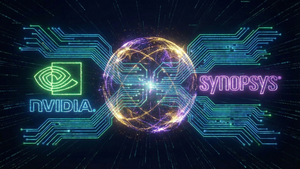
November 10, 2025 – Tower Semiconductor (NASDAQ: TSEM) has achieved a remarkable milestone, with its valuation surging to an estimated $10 billion. This significant leap, occurring around November 2025, comes two years after the collapse of Intel's proposed $5 billion acquisition, underscoring Tower's robust independent growth and strategic acumen. The primary catalyst for this rapid ascent is the company's aggressive expansion into AI-focused production, particularly its cutting-edge Silicon Photonics (SiPho) and Silicon Germanium (SiGe) technologies, which are proving indispensable for the burgeoning demands of artificial intelligence and high-speed data centers.
This valuation surge reflects strong investor confidence in Tower's pivotal role in enabling the AI supercycle. By specializing in high-performance, energy-efficient analog semiconductor solutions, Tower has strategically positioned itself at the heart of the infrastructure powering the next generation of AI. Its advancements are not merely incremental; they represent fundamental shifts in how data is processed and transmitted, offering critical pathways to overcome the limitations of traditional electrical interconnects and unlock unprecedented AI capabilities.
Technical Prowess Driving AI Innovation
Tower Semiconductor's success is deeply rooted in its advanced analog process technologies, primarily Silicon Photonics (SiPho) and Silicon Germanium (SiGe) BiCMOS, which offer distinct advantages for AI and data center applications. These specialized platforms provide high-performance, low-power, and cost-effective solutions that differentiate Tower in a highly competitive market.
The company's SiPho platform, notably the PH18 offering, is engineered for high-volume photonics foundry applications, crucial for data center interconnects and high-performance computing. Key technical features include low-loss silicon and silicon nitride waveguides, integrated Germanium PIN diodes, Mach-Zehnder Modulators (MZMs), and efficient on-chip heater elements. A significant innovation is its ability to offer under-bump metallization for laser attachment and on-chip integrated III-V material laser options, with plans for further integrated laser solutions through partnerships. This capability drastically reduces the number of external optical components, effectively halving the lasers required per module, simplifying design, and improving cost and supply chain efficiency. Tower's latest SiPho platform supports an impressive 200 Gigabits per second (Gbps) per lane, enabling 1.6 Terabits per second (Tbps) products and a clear roadmap to 400Gbps per lane (3.2T) optical modules. This open platform, unlike some proprietary alternatives, fosters broader innovation and accessibility.
Complementing SiPho, Tower's SiGe BiCMOS platform is optimized for high-frequency wireless communications and high-speed networking. Featuring SiGe HBT transistors with Ft/Fmax speeds exceeding 340/450 GHz, it offers ultra-low noise and high linearity, essential for RF applications. Available in various CMOS nodes (0.35µm to 65nm), it allows for high levels of mixed-signal and logic integration. This technology is ideal for optical fiber transceiver components such as Trans-impedance Amplifiers (TIAs), Laser Drivers (LDs), Limiting Amplifiers (LAs), and Clock Data Recoveries (CDRs) for data rates up to 400Gb/s and beyond, with its SBC18H5 technology now being adopted for next-generation 800 Gb/s data networks. The combined strength of SiPho and SiGe provides a comprehensive solution for the expanding data communication market, offering both optical components and fast electronic devices. Initial reactions from the AI research community and industry experts have been overwhelmingly positive, with significant demand reported for both SiPho and SiGe technologies. Analysts view Tower's leadership in these specialized areas as a competitive advantage over larger general-purpose foundries, acknowledging the critical role these technologies play in the transition to 800G and 1.6T generations of data center connectivity.
Reshaping the AI and Tech Landscape
Tower Semiconductor's (NASDAQ: TSEM) expansion into AI-focused production is poised to significantly influence the entire tech industry, from nascent AI startups to established tech giants. Its specialized SiPho and SiGe technologies offer enhanced cost-efficiency, simplified design, and increased scalability, directly benefiting companies that rely on high-speed, energy-efficient data processing.
Hyperscale data center operators and cloud providers, often major tech giants, stand to gain immensely from the cost-efficient, high-performance optical connectivity enabled by Tower's SiPho solutions. By reducing the number of external optical components and simplifying module design, Tower helps these companies optimize their massive and growing AI-driven data centers. A prime beneficiary is Innolight, a global leader in high-speed optical transceivers, which has expanded its partnership with Tower to leverage the SiPho platform for mass production of next-generation optical modules (400G/800G, 1.6T, and future 3.2T). This collaboration provides Innolight with superior performance, cost efficiency, and supply chain resilience for its hyperscale customers. Furthermore, collaborations with companies like AIStorm, which integrates AI capabilities directly into high-speed imaging sensors using Tower's charge-domain imaging platform, are enabling advanced AI at the edge for applications such as robotics and industrial automation, opening new avenues for specialized AI startups.
The competitive implications for major AI labs and tech companies are substantial. Tower's advancements in SiPho will intensify competition in the high-speed optical transceiver market, compelling other players to innovate. By offering specialized foundry services, Tower empowers AI companies to develop custom AI accelerators and infrastructure components optimized for specific AI workloads, potentially diversifying the AI hardware landscape beyond a few dominant GPU suppliers. This specialization provides a strategic advantage for those partnering with Tower, allowing for a more tailored approach to AI hardware. While Tower primarily operates in analog and specialty process technologies, complementing rather than directly competing with leading-edge digital foundries like TSMC (NYSE: TSM) and Samsung Foundry (KRX: 005930), its collaboration with Intel (NASDAQ: INTC) for 300mm manufacturing capacity for advanced analog processing highlights a synergistic dynamic, expanding Tower's reach while providing Intel Foundry Services with a significant customer. The potential disruption lies in the fundamental shift towards more compact, energy-efficient, and cost-effective optical interconnect solutions for AI data centers, which could fundamentally alter how data centers are built and scaled.
A Crucial Pillar in the AI Supercycle
Tower Semiconductor's (NASDAQ: TSEM) expansion is a timely and critical development, perfectly aligned with the broader AI landscape's relentless demand for high-speed, energy-efficient data processing. This move firmly embeds Tower as a crucial pillar in what experts are calling the "AI supercycle," a period characterized by unprecedented acceleration in AI development and a distinct focus on specialized AI acceleration hardware.
The integration of SiPho and SiGe technologies directly addresses the escalating need for ultra-high bandwidth and low-latency communication in AI and machine learning (ML) applications. As AI models, particularly large language models (LLMs) and generative AI, grow exponentially in complexity, traditional electrical interconnects are becoming bottlenecks. SiPho, by leveraging light for data transmission, offers a scalable solution that significantly enhances performance and energy efficiency in large-scale AI clusters, moving beyond the "memory wall" challenge. Similarly, SiGe BiCMOS is vital for the high-frequency and RF infrastructure of AI-driven data centers and 5G telecom networks, supporting ultra-high-speed data communications and specialized analog computation. This emphasis on specialized hardware and advanced packaging, where multiple chips or chiplets are integrated to boost performance and power efficiency, marks a significant evolution from earlier AI hardware approaches, which were often constrained by general-purpose processors.
The wider impacts of this development are profound. By providing the foundational hardware for faster and more efficient AI computations, Tower is directly accelerating breakthroughs in AI capabilities and applications. This will transform data centers and cloud infrastructure, enabling more powerful and responsive AI services while addressing the sustainability concerns of energy-intensive AI processing. New AI applications, from sophisticated autonomous vehicles with AI-driven LiDAR to neuromorphic computing, will become more feasible. Economically, companies like Tower, investing in these critical technologies, are poised for significant market share in the rapidly growing global AI hardware market. However, concerns persist, including the massive capital investments required for advanced fabs and R&D, the inherent technical complexity of heterogeneous integration, and ongoing supply chain vulnerabilities. Compared to previous AI milestones, such as the transistor revolution, the rise of integrated circuits, and the widespread adoption of GPUs, the current phase, exemplified by Tower's SiPho and SiGe expansion, represents a shift towards overcoming physical and economic limits through heterogeneous integration and photonics. It signifies a move beyond purely transistor-count scaling (Moore's Law) towards building intelligence into physical systems with precision and real-world feedback, a defining characteristic of the AI supercycle.
The Road Ahead: Powering Future AI Ecosystems
Looking ahead, Tower Semiconductor (NASDAQ: TSEM) is poised for significant near-term and long-term developments in its AI-focused production, driven by continuous innovation in its SiPho and SiGe technologies. The company is aggressively investing an additional $300 million to $350 million to boost manufacturing capacity across its fabs in Israel, the U.S., and Japan, demonstrating a clear commitment to scaling for future AI and next-generation communications.
Near-term, the company's newest SiPho platform is already in high-volume production, with revenue in this segment tripling in 2024 to over $100 million and expected to double again in 2025. Key developments include further advancements in reducing external optical components and a rapid transition towards co-packaged optics (CPO), where the optical interface is integrated closer to the compute. Tower's introduction of a new 300mm Silicon Photonics process as a standard foundry offering will further streamline integration with electronic components. For SiGe, the company, already a market leader in optical transceivers, is seeing its SBC18H5 technology adopted for next-generation 800 Gb/s data networks, with a clear roadmap to support even higher data rates. Potential new applications span beyond data centers to autonomous vehicles (AI-driven LiDAR), quantum photonic computing, neuromorphic computing, and high-speed optical I/O for accelerators, showcasing the versatile nature of these technologies.
However, challenges remain. Tower operates in a highly competitive market, facing giants like TSMC (NYSE: TSM) and Intel (NASDAQ: INTC) who are also entering the photonics space. The company must carefully manage execution risk and ensure that its substantial capital investments translate into sustained growth amidst potential market fluctuations and an analog chip glut. Experts, nonetheless, predict a bright future, recognizing Tower's market leadership in SiGe and SiPho for optical transceivers as critical for AI and data centers. The transition to CPO and the demand for lower latency, power consumption, and increased bandwidth in AI networks will continue to fuel the demand for silicon photonics, transforming the switching layer in AI networks. Tower's specialization in high-value analog solutions and its strategic partnerships are expected to drive its success in powering the next generation of AI and data center infrastructure.
A Defining Moment in AI Hardware Evolution
Tower Semiconductor's (NASDAQ: TSEM) surge to a $10 billion valuation represents more than just financial success; it is a defining moment in the evolution of AI hardware. The company's strategic pivot and aggressive investment in specialized Silicon Photonics (SiPho) and Silicon Germanium (SiGe) technologies have positioned it as an indispensable enabler of the ongoing AI supercycle. The key takeaway is that specialized foundries focusing on high-performance, energy-efficient analog solutions are becoming increasingly critical for unlocking the full potential of AI.
This development signifies a crucial shift in the AI landscape, moving beyond incremental improvements in general-purpose processors to a focus on highly integrated, specialized hardware that can overcome the physical limitations of data transfer and processing. Tower's ability to halve the number of lasers in optical modules and support multi-terabit data rates is not just a technical feat; it's a fundamental change in how AI infrastructure will be built, making it more scalable, cost-effective, and sustainable. This places Tower Semiconductor at the forefront of enabling the next generation of AI models and applications, from hyperscale data centers to the burgeoning field of edge AI.
In the long term, Tower's innovations are expected to continue driving the industry towards a future where optical interconnects and high-frequency analog components are seamlessly integrated with digital processing units. This will pave the way for entirely new AI architectures and capabilities, further blurring the lines between computing, communication, and sensing. What to watch for in the coming weeks and months are further announcements regarding new partnerships, expanded production capacities, and the adoption of their advanced SiPho and SiGe solutions in next-generation AI accelerators and data center deployments. Tower Semiconductor's trajectory will serve as a critical indicator of the broader industry's progress in building the foundational hardware for the AI-powered future.
This content is intended for informational purposes only and represents analysis of current AI developments.
TokenRing AI delivers enterprise-grade solutions for multi-agent AI workflow orchestration, AI-powered development tools, and seamless remote collaboration platforms.
For more information, visit https://www.tokenring.ai/.





